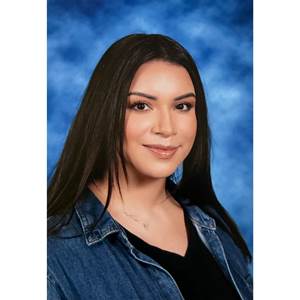86-Year-Old Principal Renews Contract, Not Ready To Retire
20 February 2018
Hiram Broyls has been principal of Burbank Elementary in Belmont Cragin since 1977 and is still going strong. In fact, he just renewed his contract for another four years and says he has no plans of leaving anytime soon.

At 86-years-old, principal Hiram Broyls is still going strong. In fact, he just renewed his contract for another four years and says he has no plans of leaving anytime soon. He’s been principal of Burbank Elementary in Belmont Cragin since 1977.
“I like being here and after all these years this is a way of life,” he said. “If I were at home there would be the four walls, a television set and no justification for getting up in the morning. It would be very dull.”
MEET PRINCIPAL BROYLS
He was born Jan. 1, 1932 and grew up on the South Side in the Morgan Park community. He attended and graduated from both Shoop Elementary and Morgan Park High School. He still lives in his childhood home, which his parents built in 1929, the same year Burbank Elementary was built, he said.
Before coming to Burbank, Broyls was a principal at Dulles, near 63rd and the Dan Ryan in Englewood.
He had always worked in education. He started his career as a teacher. He said before the former Louis Champlain School of Chicago was torn down, he taught there for 17 years.
“After being a teacher for awhile, I trained to become a principal,” he said. “They eventually assigned me to Dulles.”
THE COMMUTE
His day begins at 3:40 a.m. when the alarm goes off.
Every morning he makes his nearly two-hour commute via the CTA from 115th Street, taking the #115 bus, then the Red Line, transferring to the Green Line and finally, riding the #86 Narragansett bus.
“I read, I’m probably the only one reading, everybody else is staring at their cell phones, but I’m reading,” Broyls said. “If I have nothing important to read, I’m reading the newspaper. It’s a good way of accomplishing some worthwhile tasks while on the way to school.”
He arrives at the school around 6:25 a.m.
He gave up driving to work years ago.
“I used to drive and I was in terrible physical condition just sitting in the car,” Broyls said. “Now I’m running up and down those stairs and chasing buses; it keeps me in good shape. I don’t have to go to an exercise club, I can give CTA credit.”
THE EARLY DAYS
Broyls became Burbank’s first African-American principal when he joined the school in 1977.
In 1980, the Chicago Board of Education and the U.S. Department of Justice entered into a desegregation consent decree which, among other things, required CPS to implement a voluntary desegregation plan designed to create and maintain as many racially integrated schools as possible. CPS utilized a variety of methods, including magnet schools, as a means to achieve this goal.
Another way the district helped desegregate the schools was by moving principals to new schools.
Broyls said he left his predominately African-American school in Englewood for Burbank, which at the time, was predominately Italian-American.
With racial tensions still an issue during that time, and “White Flight”—when white families moved out of the city—still happening, Broyls said he wasn’t sure what to expect at the new school.
“I first came in here nervous and uptight,” he said. “I couldn’t relax because it was a new neighborhood. There was potential for having friction, but the children got along fine, teachers got along fine, and I got along fine.”
After receiving a welcoming response, more than he expected, Broyls said he relaxed over time.
“It took me awhile, but everyone was so nice,” he said. “The children treated me with respect and after awhile I lightened up and tried to be a motivator rather than a tyrant. It worked better.”
ACCOMPLISHMENTS
Broyls excitedly shared that Burbank Elementary is a Level 1+, the highest level a school can get on the CPS ranking system.
Getting the school there took effort from everyone, he explained.
“Everybody’s motivated,” Broyls said. “We all worked as a team.”
He’s proud of that, but shared that there were some obstacles to overcome along the way.
For example, in 1978, there were rumors that the school would close if enrollment continued to decline, he said.
“When I came here this big building had less than 400 children,” Broyls said.
The solution was to attract students in the nearby Austin neighborhood.
“There were overcrowded schools in Austin,” he said, explaining that as part of the Chicago Public Schools Desegregation Consent Decree, the district bused those students to Burbank Elementary.
“We had close to 21 buses bringing children here and they came from all over,” Broyls said.
“It desegregated our school and gave those children an opportunity and they did really well.”
The school created a gifted program that was offered from 1979-1995. He said it was one of the original Illinois’ gifted programs.
Broyls also implemented a program called the ARM Program, Accelerated Reading and Math. It was another method to bring outside children to the school. It worked.
“People signed up for it and we received 200-300 children from Austin so our school had become desegregated,” Broyls said.
His efforts were working so well that overtime, the school had another problem—overcrowding.
“We had about 1,300 children in this one building, it was very crowded,” Broyls said. “We had to have classes in one room with a divider down the middle. And when the choir rehearsed, the elevator was center of their rehearsals. We put the piano on the elevator and the kids would gather around.”
That couldn’t work for much longer, therefore, the school was expanded, he said.
EVOLVING WITH THE TIMES
Classroom sizes have reduced over the years.
“When I first came here we had the old-fashioned desks, 48 to a room, bolted to the floor,” he said. “Now the maximum class size is 32.”
The teaching style has shifted as well. Teachers used to follow the curriculum set by the math and reading books, but that’s no longer the case now. They meet students where they are, Broyls said.
“They teach according to the needs of the children, which is determined by the skills they have mastered,” he said. “That wasn’t true when I first came here. There was set curriculum so a lot of training had to be been done. The teachers have all changed and so have I.”
Broyls also said they’ve offered more after school programs to make the school more attractive to parents. Currently, they have about 14 activities that range from math and reading activities to jewelry making. There’s even a computer class called the Tech Ninjas that teaches students how to repair computers.
He said that CPS has done a better job of tracking achievement and its progress, and that’s something he’s pleased with.
“I would be kind of depressed when people would say bad things about Chicago Public Schools,” Broyls said. “I knew they weren’t really that bad, but we couldn’t prove anything. Now CPS has proof that our kids are doing as well, and better than a lot of schools in the state.”
“We’re being recognized for progress, and for good things, and it really makes me feel proud,” he said.
SCHOOL COMMUNITY
Parents say that Burbank Elementary is an exceptional school. Their children are pushed academically and recognized for their achievements.
For example, the school participates in a quarterly award ceremony called the Shooting Stars.
“It’s for children who were picked out by their teachers for exceptional something, anything,” Broyls said. “It doesn’t have to be grades, it can be good citizenship or getting better scores or reading a lot of books.”
The ceremony, which families are invited to, is just one example of how the Burbank faculty and staff keep a tight-knit community, Broyls said.
Parent Rosa Romo has an eighth-grader at the school and said through a Spanish translator that she likes “everything” about the school.
“Everything the teachers do, the principal, the assistant, they’re all great help and the children get a lot of support,” Romo said.
The education her son is receiving is “very good” and he’ll be prepared for high school, Romo added.
Parent Consuelo Flores has seven children who attend Burbank and said she appreciates the after school programs and how teachers have prepared her children for the next grade. Two have already been named Shooting Stars.
Broyls said that Burbank is like a big family.
“We have really nice parents, beautiful parents and children,” he said. “It’s a fun place to be. I just feel good being here.”
Richard Walsh has worked as the school’s building engineer for the past 19 years.
“I started long before they were putting the new addition on and I have to say, working with Dr. Broyls has been an experience, probably the best guy I’ve ever worked for,” Walsh said.
The principal’s interactions with his 900 plus students is fun to watch, he said.
“He loves to be out in the hallway in the morning when the kids are coming in and they all walk by and say, ‘Hi Dr. Broyls,’” he said. “He’ll call several of them by name and he talks to them at their level.”
The morning is the best part of the day, Broyls said.
“I get to say hello to them because I just love to see the children come in with a big smile,” he said. They’re really like my extended family.”
Related Stories
10 December 2025
Take Five with Jennifer Marrero, Teacher of the Visually Impaired at Otis Elementary
Ms. Marrero's favorite part of her work is the relationships she builds with her students and their families.
05 December 2025
Take Five with Dania Daoud, Restorative Justice Coordinator at Parker Community Academy
Mrs. Daoud is known to be patient and understanding, and someone who her school community could lean on.
04 December 2025
A Peek at One Teacher’s Journey Over the Last Five Years
Ms. Bautista is starting to be a mentor for newer teachers.
21 November 2025
A Great Start to the School Year in Ms. Dela Cruz’s Classroom
This year is shaping up to be one of Ms. Dela Cruz's best years yet.




